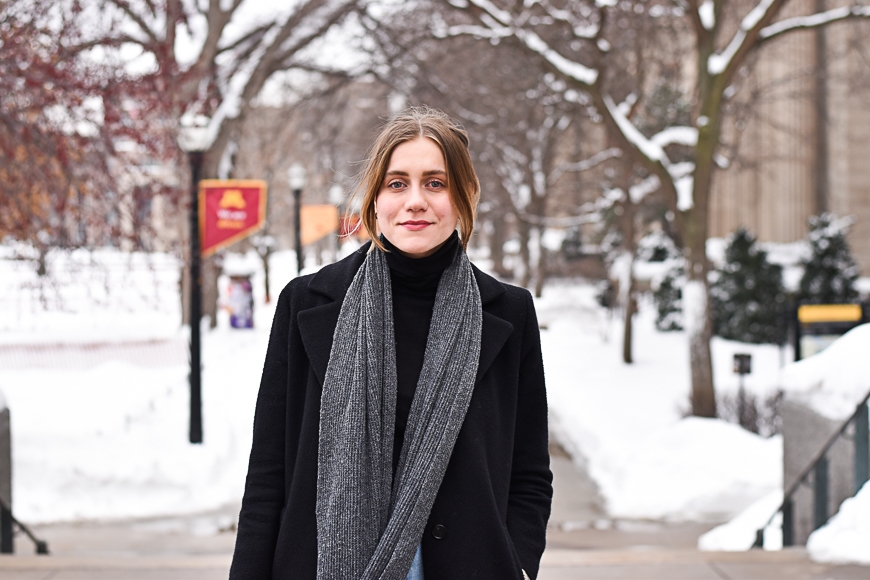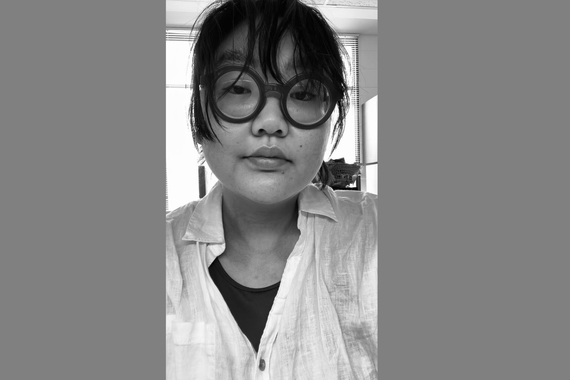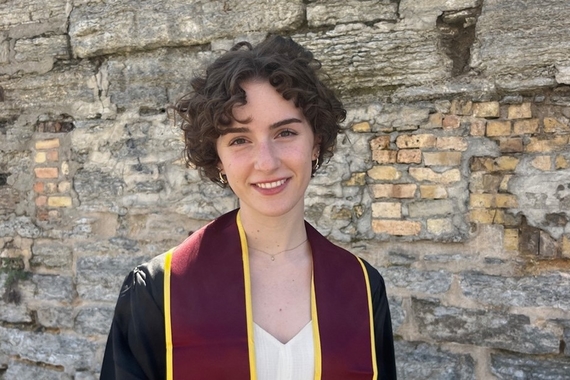Past Creations Lead to New Inspirations: An Exhibition Worth Exploring
Which American artist painted many cow skulls? Who was the Macedonian ruler whose conquests spread Greek culture throughout the Mediterranian?
Martyna Stopyra (BA ‘18, art history) enjoyed answering questions like these from a young age, entering regional “knowledge competitions” for art history in her native Poland as an elementary-school student. “I started going to those, and I was winning, and that’s how I got into it,” she says. She kept studying art history through high school and ended up majoring in it. She’s now preparing to take her first steps into the professional art world, equipped with hands-on experiences and skills she acquired as a student in the College of Liberal Arts.
No Place Like Home
Stopyra attended the University of Aberdeen in Scotland for the first two years of her undergraduate career but realized that she wanted a change from the school’s focus on medieval and early modern art. She came to Minnesota for some family connections and the opportunity to study contemporary art at UMN.
Stopyra had found her niche. “All the professors are just so amazing and helpful and really engaged,” Stopyra explains. “Third and fourth floor of Heller Hall: it felt like home there.”
Among the many highlights that characterized her time at UMN, Stopyra cites two that stand out. First, she described her experience taking a seminar with Professor Steven Ostrow that involved a week-long trip to Rome, during which she and her classmates visited an array of museums and churches that showcased the artwork of acclaimed Italian painter Caravaggio. Stopyra explained that exploring the artistic beauty of Rome “was like sightseeing with an incredible professor.” Second, she earned the Pioneer Scholarship for her capstone project, which gave an in-depth look at television art between the 1960s and 1990s, looking to Nam June Paik, the “Father of Video Art,” as her source of inspiration. Stopyra was fascinated with Paik’s ability to utilize recording and feedback technology to create both visual and aesthetic experiences. In her eyes, these artistic experiences challenged the traditional perception of art. “I picked one of his video installations from the 1990s and considered the more theoretical ways… I talked about time and how it applies to video art,” Stopyra elaborates.
Connecting & Curating
Stopyra rounded out her art history education with two valuable experiences outside the classroom. She completed an internship with the Weisman Art Museum’s senior curator, Diane Mullin, where she fostered her creativity, enhanced her research skills, and expanded on her written communication expertise through researching pieces within the collection, preparing research notes for artwork acquisition meetings, and writing labels for a few pieces in the gallery. “It prepared me for the professional art world, and these [experiences] are the first steps toward that,” Stopyra explains. She noted that many of the academic skills she learned at the U can “easily translate to hands-on work with artists and art.”
In summer 2018, Stopyra was approached by Jane Blocker, a professor of art history currently serving as associate dean for arts and humanities, who asked her to curate an exhibition to open outside the CLA dean’s office in Johnston Hall that December. Stopyra worked with faculty in the art department to select pieces that developed her theme of exploring how the past influences contemporary artwork. She wanted to “show how history works to inform present-day works of art and how it inspires these artists in their creative practices.” She chose pieces from a variety of media—printmaking and photography, painting and sculpture—that are “all connected by a common theme of translating history into modern artistic language.”
Motivated by the newfound responsibility on her shoulders, Stopyra accepted the challenges that came along with developing this exhibition; she was in charge of writing up descriptions, studio visits, transporting the artwork, and hanging it. Looking back, Stopyra relished the time she spent with Blocker. “I’ve only worked with Jane for one semester, but when I think about art and art history and what kind of artwork professional I want to be, she really influenced me in that respect,” she says.
The exhibition How Does the Past Create Our Present? will be on display in Johnston Hall through summer 2019.
Ready for Success
Stopyra’s art history degree equipped her with a multitude of skills. She learned about the professional art world and took her first steps forward by learning how to conduct research and express her ideas through writing. Her academic experience smoothly translated into hands-on work with artists. “A liberal arts education helps you develop personally, nurtures your intellect, and helps you become an aware member of society,” Stopyra reflects.
“I really loved my time with the art history department,” Stopyra gushes. She feels prepared for a bright future in her field and hopes to work in an auction house with modern and contemporary art, appraise artworks as a contemporary art specialist, or become a museum curator.
Stopyra’s journey is far from over; after applying to a few graduate schools, she eagerly accepted the offer to attend Christie’s Education in New York City. Stopyra will begin working toward an MA in modern and contemporary art market this fall and looks forward to seeing where her path will lead her next.
This story was written by an undergraduate student in CLA.



